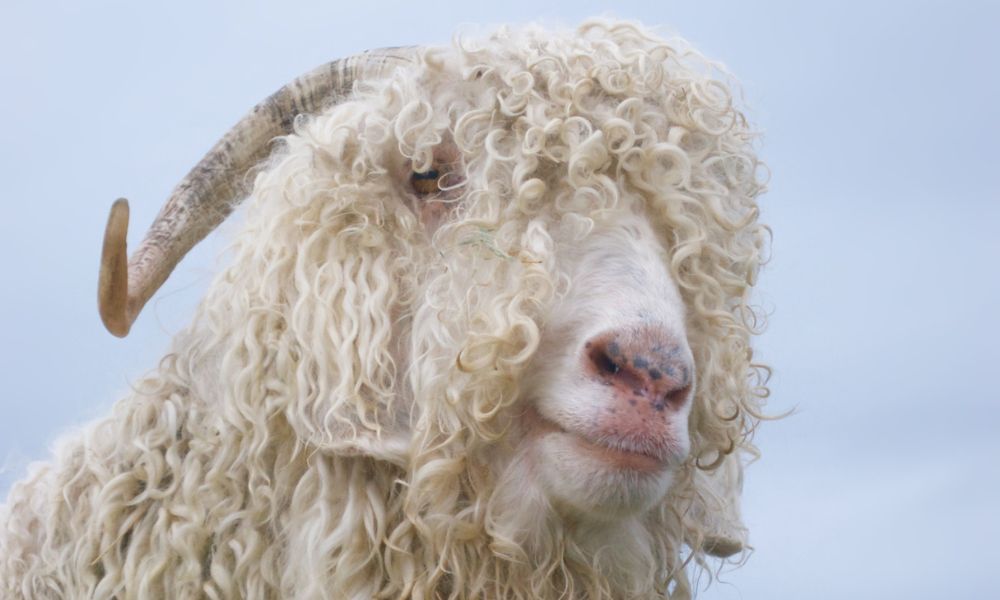All goats are generally considered pretty hardy, and as far as a comparison to the rest of the animal kingdom goes, Angora goats are more or less quite hardy.
However, compared with the average hardiness of a goat, they are not very hardy at all and need a lot of extra support for harsh weather.
Let’s find out more.

How hardy are Angora goats?
Compared with other goat breeds, Angora goats are really not very hardy.
They don’t do particularly well in cold weather, and are more susceptible to disease, infection, and parasites than other breeds.
Cold weather is one thing, and indeed low temperatures, in general, are enough to put these goats at risk of all sorts of problems if they don’t have the proper facilities to keep warm.
Even then, what’s perhaps even worse for them is a very wet climate.
If there’s a lot of rain where you live, then this can be really bad for the Angora goat.
They are much better in drier climates, and they can very easily get ill from too much exposure to rain.
Even with somewhere to shelter, the wet conditions once the rain has stopped can still present a number of problems for them.
While this issue is much worse right after shearing, it will always be a problem.
If they are exposed to wet, cold weather after shearing, then they really cannot withstand it very well at all.
Again, they can get ill very easily, and while they will get over it with the right care, repeated exposure could eventually lead to more serious problems.
Especially after birth and throughout their juvenile period, Angora goats are not hardy at all.
They are very vulnerable to illness, disease and death at this point.
While all newborns and kids are obviously more vulnerable, the hardier breeds are far less vulnerable at this stage.
The problems don’t stop with cold weather, either.
Their hardiness in terms of resistance to disease and parasites is also not great, and they can be very vulnerable to these kinds of problems.
As you can see, then, keeping Angora goats can be a delicate process, and the slightest thing can cause serious problems.
How long will a healthy one live?
How long does an Angora goat live?
Obviously, how long a sensitive animal like an Angora goat lives is highly dependent on the conditions in which it lives.
Given a constant, comfortably warm and dry climate, and regular checks for parasites, disease and infection, a well-cared-for Angora goat can live for up to 12 years.
On average, though, Angora goats live to be around ten years old, and not much older than this.
Eight to ten years is the standard, so you should expect your goat to live for around a decade.
Obviously, though, even if you do everything you can to care for them, they’re not going to live as long in wet or cold conditions.
The winters will take a greater toll on them, and this will ultimately shorten their lifespan.
So, can they live in harsh climates at all?
Can Angora goats live in harsh climates?
Angora goats can live in harsh climates, but it is far from ideal for them to do so.
As I said, the ideal climate for an Angora goat is something warm and dry, without constant or even regular rainfall and with a high year-average temperature.
In harsh climates, too, Angora goats will have a weakened immune system, which is already more susceptible to disease and infection than other goats are.
My view, then, is that if you live somewhere very wet and cold, Angora goats are not for you.
Even if you provide a warm dry space for them indoors, they won’t be happy if they are cooped up in there most of the time.
They are roaming animals and want to graze.
An important point to consider and contextualize these goats in terms of you keeping them is where they originally come from and were bred.
Where do Angora goats come from?
We do not know the precise origin of Angora goats, and indeed we do not have any descriptions of them in the west that predate 1555.
But that alone puts it into perspective—they’re a very old breed!
They appear to have been bred in Turkey, as that is where they are first described. Turkey, as you probably know, features varied climates, but on the whole it is a very warm and very dry country.
A good rule of thumb for thinking about how well Angora goats will do in your climate is by comparing it to the average temperature and conditions in Turkey.
The more different from Turkey your local conditions are, the worse they are going to be for Angora goats.
Angora goats present more challenges in rearing than do a lot of other goats.
They are just not as hardy as other goats and they are much more susceptible to bad weather, so this is an important thing to keep in mind.
If the conditions in your local area are at all harshly cold or wet, then Angora goats may not be the best choice for you.
More in Angora
- Are Angora Goats Easy To Look After?
- Are Angora Goats Friendly?
- Are Angora Goats Good For Meat?
- Are Angora Goats Good Milkers?
- Are Angora Goats Hardy?
- Are Angora Goats Profitable?
- Are Angora Goats Rare?
- Do Angora Goats Need To Be Shorn?
- How Long Do Angora Goats Live?
- How Much Does An Angora Goat Cost?
